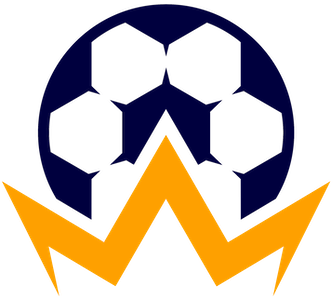The recent Club World Cup encounter between Paris Saint-Germain (PSG) and Inter Miami CF served as a vivid demonstration of the vast gulf still separating European football giants from Major League Soccer (MLS) hopefuls. PSG dismantled Miami 4-0 in a commanding display of skill, tactical discipline, and depth — qualities honed over years competing at the highest level of European football. Luis Enrique’s PSG embodied a football philosophy that blends relentless work rate with surgical precision, qualities that MLS squads strive to emulate but have yet to fully achieve.
From the opening minutes, PSG’s dominance was unmistakable. Their fluid passing and intelligent positioning forced Miami into a defensive posture that was difficult to sustain. Although Lionel Messi dazzled at moments, the overall disparity in squad strength and tactical cohesion was brutally apparent. Messi’s individual brilliance, while a blessing for Miami, could not compensate for the structural shortcomings and lack of depth inherent in the MLS roster system.
The MLS Structural Challenge: Roster Constraints and Depth Deficiency
Inter Miami’s struggles highlight a broader institutional challenge faced across the MLS—a league constrained by stringent roster regulations and a narrow transfer window that stifles flexibility. While the MLS’s designated player system allows teams to attract big-name stars, it often results in top-heavy squads where a few marquee players carry the burden, and the supporting cast is comparatively weaker.
This systemic imbalance was exposed painfully when Miami faced injuries and fatigue during the tournament. Key players like Noah Allen suffered setbacks, forcing tactical reshuffles that revealed a thin bench. Replacement players, many young and inexperienced at the international level, struggled to maintain the standards set by the starters. Inter Miami co-owner Jorge Mas’s remarks underscore the urgency for evolving the league’s roster rules to foster deeper, more competitive squads capable of holding their own on the global stage.
Inter Miami’s Courageous Growth Amidst Daunting Odds
Despite the harsh reality reflected in the 4-0 scoreline, Inter Miami’s journey in the Club World Cup was far from a failure. Their qualification as Supporters’ Shield winners and their historic progress to the knockout stage—being the only MLS team to do so and the youngest squad in the tournament—signal promising growth.
The team’s spirited performances, including a memorable win over FC Porto and draws against powerhouses like Palmeiras and Al Ahly, illustrate an emerging resilience. These moments of brilliance, punctuated by Messi’s unforgettable strike against Porto, serve as encouraging proof that MLS clubs can compete internationally provided they build on these experiences.
The Miami youngsters, nurtured through the club’s academy, found themselves thrust onto an intense global stage. Facing the reigning European champions tested their mettle and exposed the vast gap to close but equally provided invaluable experience and inspiration. This integration of youthful talent with seasoned stars like Messi, Suárez, and Busquets is a cornerstone for Miami’s long-term strategy.
Lessons in Leadership and Tactical Discipline
From PSG’s perspective, the match exemplified the efficacy of Luis Enrique’s coaching philosophy, which demands unwavering work ethic and tactical discipline. Jordi Alba’s praise of PSG underscores the reality that world-class teams do not succeed on talent alone—they thrive on rigorous training, collective effort, and strategic flexibility.
Inter Miami’s head coach, Javier Mascherano, and his predecessor Gerardo Martino acknowledged the limitations MLS rules imposed on assembling a competitive roster but approached the challenge with realism and determination. The tactical lessons from facing such a superior opponent—regarding positioning, stamina, and strategic execution—are priceless for Miami’s squad development.
Moreover, the tournament offered a unique learning platform for Miami’s younger players, who now have a clearer understanding of the physical and mental demands required at the highest levels. Such exposure will inevitably influence Miami’s domestic and international ambitions.
Implications for the Future of North American Soccer
Inter Miami’s Club World Cup run symbolizes a critical juncture for MLS and North American soccer at large. It brings into sharp focus the league’s current limitations but also its tremendous potential for evolution. As MLS moves towards more flexible roster management and deeper investment in player development, teams like Miami can increasingly bridge the gap with established football powers.
This tournament revealed what needs to be addressed—not just the talent gap but the organizational and regulatory frameworks that inhibit true global competitiveness. Miami’s experience is a clarion call for MLS to embrace reforms that enable sustainable growth. For the players and coaches, it sparked a newfound awareness of what it takes to succeed beyond domestic borders.
The road ahead for Inter Miami and MLS is not smooth, but the valuable insights gathered alongside moments of historic achievement ensure that this club is not existing on the sidelines but actively shaping the future of American soccer. These lessons, hard-earned against the kings of Europe, will forge stronger foundations capable of eventual triumphs.


Leave a Reply